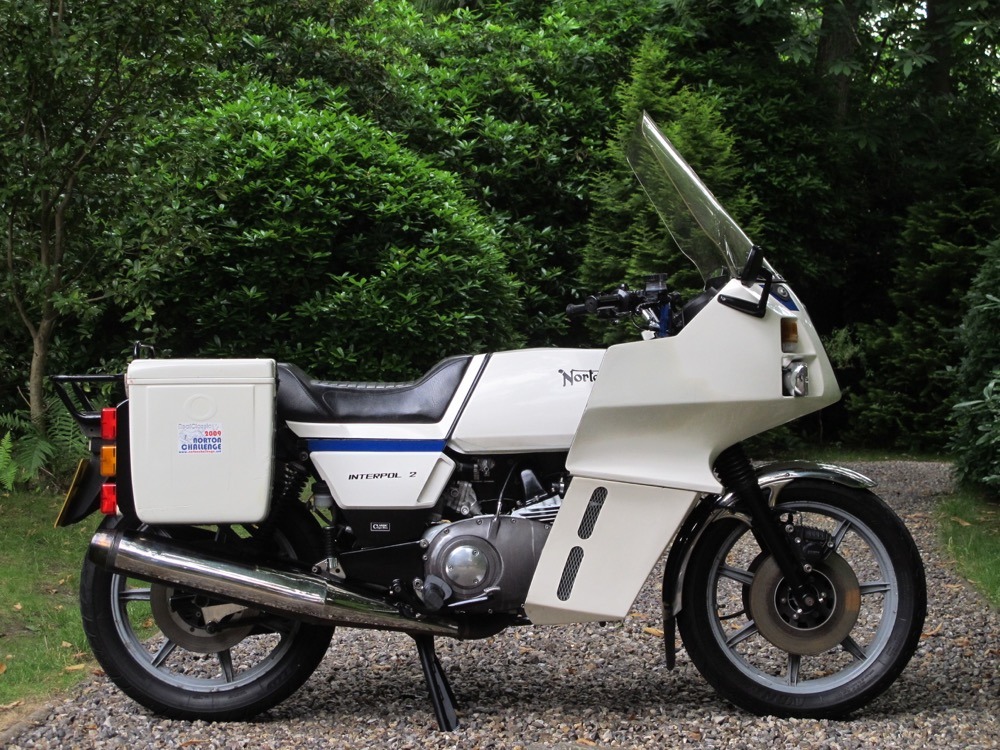
|
|
|
|
|
|
Classic Bikes
Custom Bikes
Individual
Racing Bikes AJP
AJS
Aprilia
Ariel
Avinton / Wakan
Bajaj
Benelli
Beta
Bimota
BMW
Brough Superior
BRP Cam-Am
BSA
Buell / EBR
Bultaco
Cagiva
Campagna
CCM
CF Moto
Combat Motors
Derbi
Deus
Ducati
Excelsior
GASGAS
Ghezzi Brian
Gilera
GIMA
Harley Davidson
Hero
Highland
Honda
Horex
Husaberg
Husqvarna
Hyosung
Indian
Jawa
Kawasaki
KTM
KYMCO
Laverda
Lazareth
Magni
Maico
Mash
Matchless
Mondial
Moto Guzzi
Moto Morini
MV Agusta
MZ / MuZ
NCR
Norton
NSU
Paton
Peugeot
Piaggio
Revival Cycles
Roland Sands
Royal Enfield
Sachs
Sherco
Sunbeam
Suzuki
SWM
SYM
Triumph
TVS
Ural
Velocette
Vespa
Victory
Vincent
VOR
Voxan
Vyrus
Walt Siegl
Walz
Wrenchmonkees
Wunderlich
XTR / Radical
Yamaha
Zero
Video
Technical
Complete Manufacturer List
|
Norton Commando Interpol 2
|
| . |
|
Make Model |
Norton Commando Interpol 2 |
|
Year |
1984 - 1989 |
|
Engine |
Air cooled. twin chamber. rotary |
|
Capacity |
588 cc / 35.9 cu in |
| Compression Ratio | 8.8:1 |
|
Starting |
Electric |
|
Transmission |
5 Speed |
|
Final Drive |
Chain |
|
Front Suspension |
ě38 mm Telescopic forks |
|
Front Wheel Travel |
130 mm / 5.1 in |
|
Rear Suspension |
Twin Girling gas units, 3-way adjustable for preload. |
|
Front Brakes |
2 x ě265 mm discs |
|
Rear Brakes |
Single ě265 mm disc |
|
Front Tyre |
100/90-18 |
|
Rear Tyre |
110/80-18 |
|
Dry-Weight |
235 kg / 518 lbs |
|
Fuel Capacity |
23 L / 6.1 US gal |
| . |
The Interpol 2 is a Norton motorcycle produced from 1984 to 1989. It has an air-cooled twin rotor 588 cc (35.9 cu in) Wankel engine.
Its model name refers to the Norton Interpol,
a 1970s police version of the Norton Commando. However, the Interpol was a
piston-engined model and is mechanically unrelated to the Interpol 2.
Towards the end of the production run one machine was built for development
purposes with a new water-cooled version of Norton's twin-rotor Wankel
engine. This machine was designated Interpol 2A. When production of the
Interpol 2 ceased it was succeeded by the P52 version of the Norton
Commander.
Norton did not sell the Interpol 2 to the general public. Sales were restricted to fleet customers: civilian police forces, military police forces (particularly the Royal Air Force Police), and the RAC.
To get back into the Police and military market, Norton recruited Neale Shilton, Triumphs Police sales manager, who developed a Police bike against the often considerable resistance and envy of other members of the Norton management- I recommend reading Shiltons book "A Million Miles ago".
The minimum outlay for tooling meant that the fairing was bought in from Avon Fairings. Police safety regulations demanded the petrol tanks had to be made from metal, not glass fibre; as all Norton Commando tanks at the time were made from glass fibre, Shilton used up steel pressings for slimline featherbed petrol tanks, equipping them with a bottom that fitted the Commando frame. The speedo had to be accurate, so a "non-pair" of Chronometric speedo and magnetic rev counter were used. Some petrol tanks had a boxed-in section on top for the radio equipment of the day; most were fitted with the (terrible) "fits all but nothing rightly" Craven carriers and panniers, employing 16 half clamps, 30 distance pieces, 6 stays, and general shoddyness as a main design feature.

|
Any corrections or more information on these motorcycles will be kindly appreciated. |